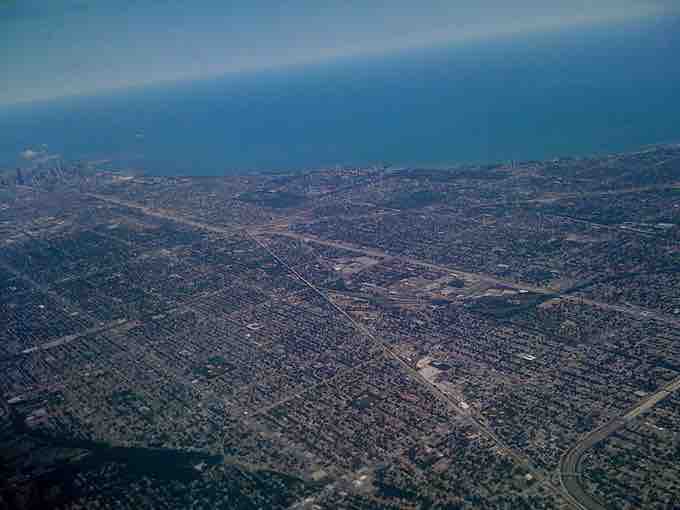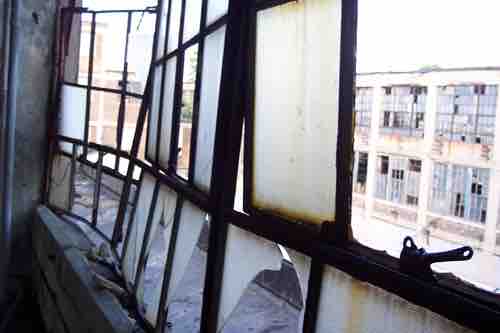Cities are dynamic places—they grow, shrink, and change. Sociologists have developed different theories for thinking about how urban populations change.
Growth Machine Theory
The growth machine theory of urban growth says urban growth is driven by a coalition of interest groups who all benefit from continuous growth and expansion. First articulated by Molotch in 1976, growth machine theory took the dominant convention of studying urban land use and turned it on its head.
The field of urban sociology had been dominated by the idea that cities were basically containers for human action, in which actors competed among themselves for the most strategic parcels of land, and the real estate market reflected the state of that competition. Growth machine theory reversed the course of urban theory by pointing out that land parcels were not empty fields awaiting human action, but were associated with specific interests—commercial, sentimental, and psychological. In other words, city residents were not simply competing for parcels of land; they were also trying to fulfill their particular interests and achieve specific goals. In particular, cities are shaped by the real estate interests of people whose properties gain value when cities grow. These actors make up what Molotch termed "the local growth machine. "
Urban Sprawl
Whether explained by older theories of natural processes or by growth machine theory, the fact of urban growth is undeniable: throughout the twentieth century, cities have grown rapidly. In some cases, that growth has been poorly controlled, resulting in a phenomenon known as urban sprawl. Urban sprawl entails the growth of a city into low-density and auto-dependent rural land, high segregation of land use (e.g., retail sections placed far from residential areas, often in large shopping malls or retail complexes), and design features that encourage car dependency.
Urban sprawl's segregated land use means that the places where people live, work, shop, and relax are far from one another, which usually makes walking, public transit, or bicycling impractical. As a result, residents must use an automobile. Urban sprawl tends to include low population density: single family homes on large lots instead of apartment buildings, single story or low-rise buildings instead of high-rises, extensive lawns and surface parking lots, and so on.
Critics of urban sprawl argue that it creates an inhospitable urban environment and that it encroaches on rural land, potentially driving up land prices and displacing farmers or other rural residents. Urban sprawl is also associated with negative environmental and public health effects, many of which are related to automobile dependence: increases in personal transportation costs, air pollution and reliance on fossil fuel, increases in traffic accidents, delays in emergency medical services response times, and decreases in land and water quantity and quality.
Urban Decay
Some have suggested that urban sprawl is driven by consumer preference; people prefer to live in lower density, quieter, more private communities that they perceive as safer and more relaxed than urban neighborhoods. Such preferences echo a common strain of criticism of urban life, which tends to focus on urban decay. According to these critics, urban decay is caused by the excessive density and crowding of cities, and it drives out residents, creating the conditions for urban sprawl.
BROKEN WINDOWS
An alternative theory suggests that density does not cause crime, and crime does not cause people to leave the city; when people leave, city neighborhoods are abandoned and neglected, resulting in crime and decay. This theory, known as the "broken windows theory," argues that small indicators of neglect, such as broken windows and unkempt lawns, promote a feeling that an area is in a state of decay. Anticipating decay, people likewise fail to maintain their own properties.
RESPONSES TO DECAY
Cities have responded to urban decay and urban sprawl by launching urban renewal programs. Two specific types of urban renewal programs—New Urbanism and smart growth—attempt to make cities more pleasant and livable.
Smart growth programs draw urban growth boundaries to keep urban development dense and compact. In addition to increasing the density of cities, urban growth boundaries can protect the surrounding farmland and wild areas. Smart growth programs often incorporate transit-oriented development goals to encourage effective public transit systems and make bicyclers and pedestrians more comfortable.
New Urbanism is an urban design movement that promotes walkable neighborhoods with a range of housing options and job types. As an approach to urban planning, it encompasses principles such as traditional neighborhood design and transit-oriented development. A neighborhood designed along New Urbanist principles would have a discernible center (such as a square or a green) with a transit stop nearby. Most homes would be within a five-minute walk of the center and would provide a variety of housing options, including houses, row houses, and apartments to encourage the mixing of younger and older people, singles and families, and poor and wealthy.

Urban sprawl
Chicago, seen by air, shows urban sprawl

Broken windows
Broken windows in Detroit signal urban decay